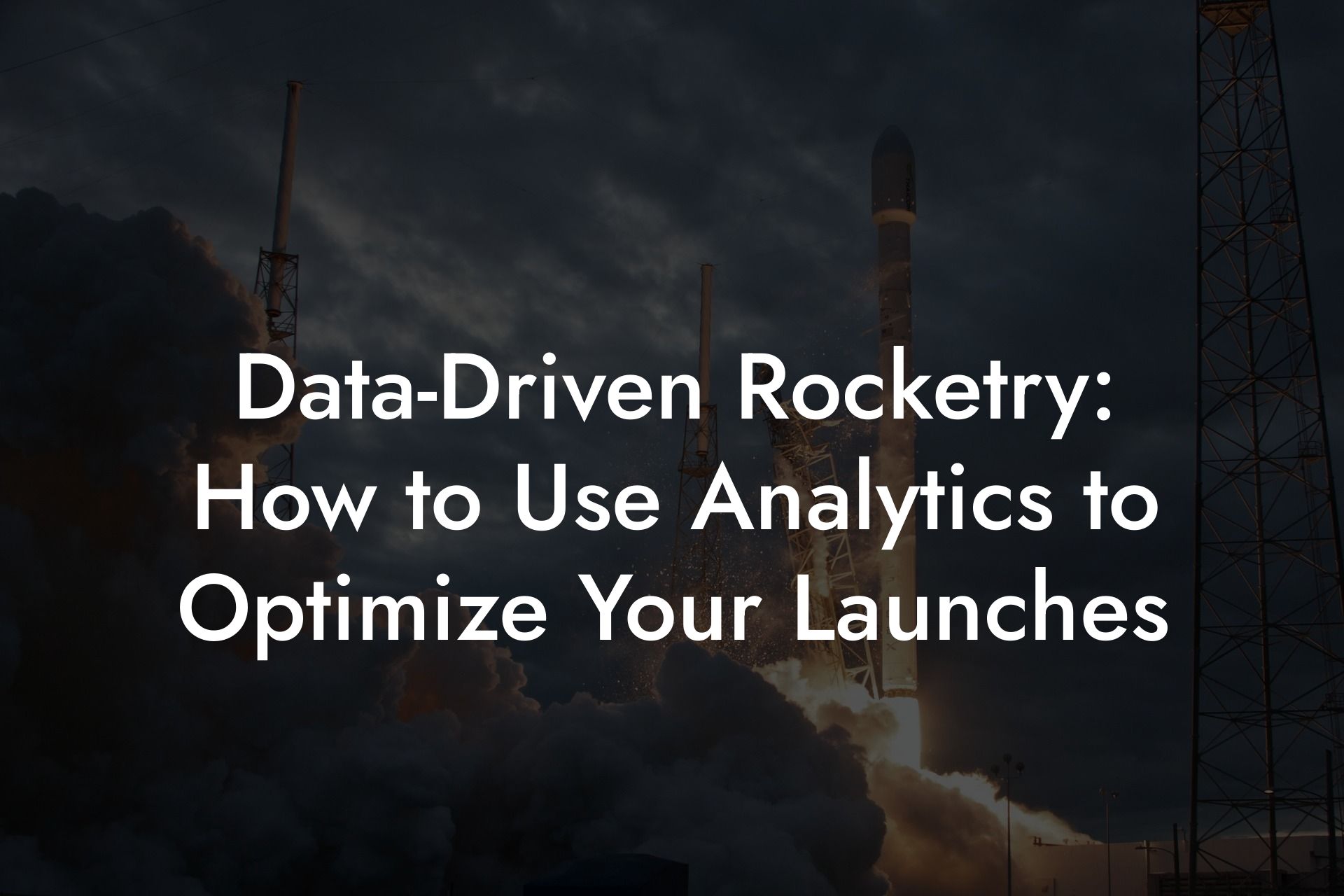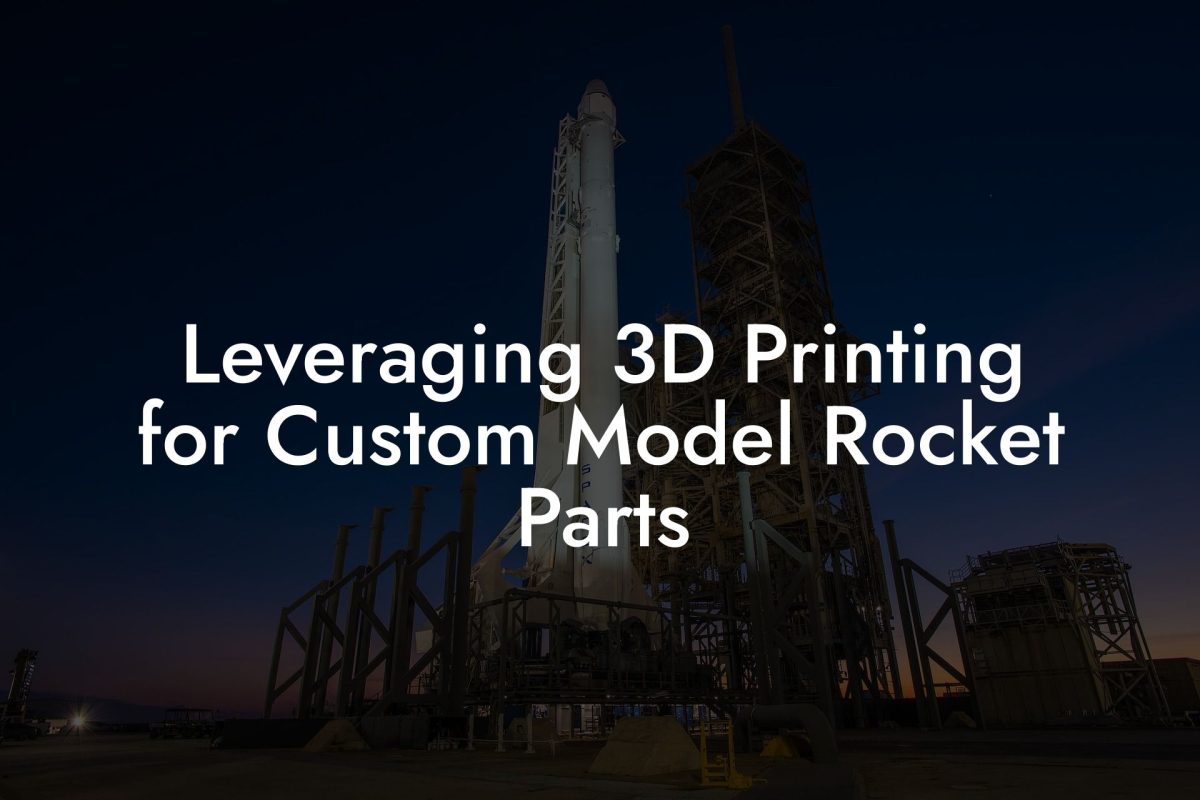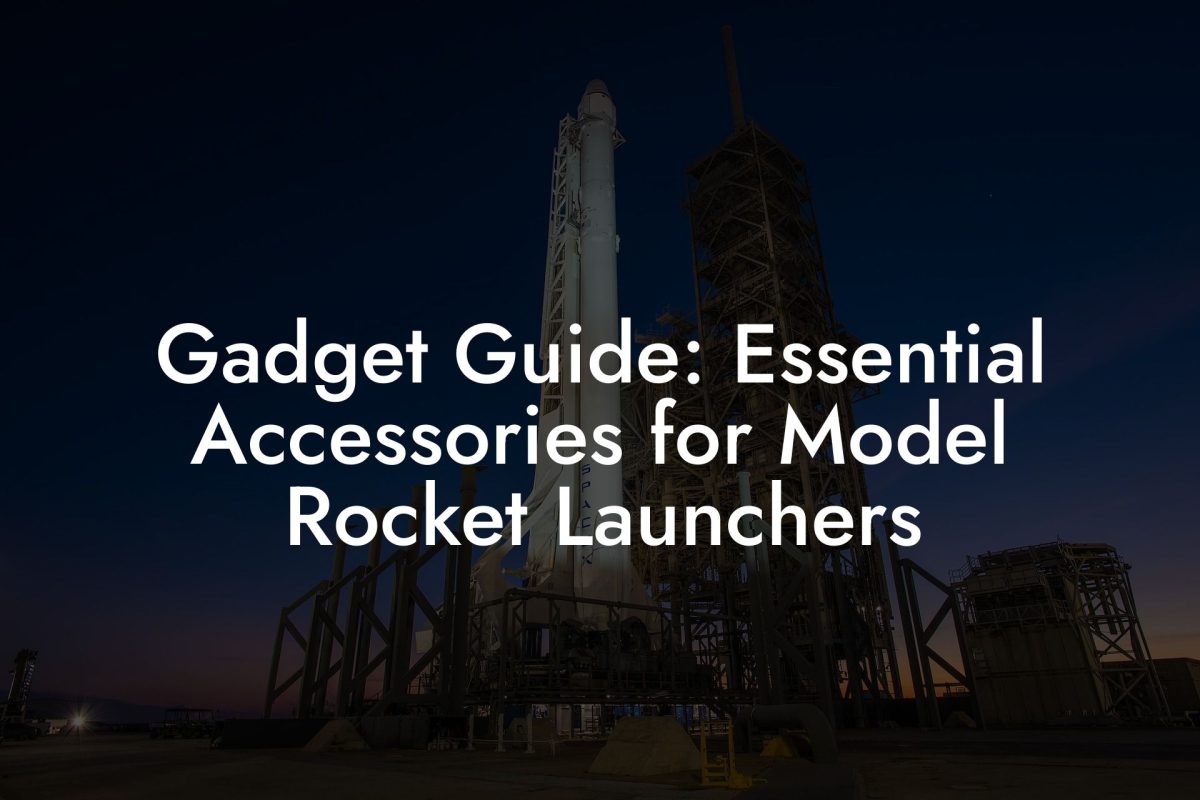In the era of digital innovation, every rocket launch becomes an opportunity to learn and improve. "Data-Driven Rocketry: How to Use Analytics to Optimize Your Launches" explores how to harness flight data and advanced analytics to fine-tune your rocket designs, boost performance, and achieve safer, more consistent flights. Whether you’re a hobbyist eager to embrace modern techniques or a competitive rocketeer looking for an edge, this guide will show you how data can propel your rocketry to new heights.
Quick Links to Useful Sections
- Introduction: The Rise of Data-Driven Rocketry
- The Importance of Analytics in Model Rocketry
- Essential Tools and Techniques for Data Collection
- Onboard Sensors and Data Loggers
- Digital Telemetry Systems
- Software for Data Analysis
- Using Analytics to Optimize Your Launches
- Step 1: Data Collection and Organization
- Step 2: Visual Analysis
- Step 3: Identify Areas for Improvement
- Step 4: Implement and Test Changes
- Case Studies: Real-World Applications of Data-Driven Rocketry
- The Thrust Tuner
- The Aerodynamic Optimizer
- The Recovery Refiner
- Model Rocket Analytics FAQs
- Your Next Launch: Harness the Power of Data and Optimize Your Flight
Introduction: The Rise of Data-Driven Rocketry
Traditionally, model rocketry relied on trial and error, physical testing, and intuition to guide design improvements. Today, digital sensors, data loggers, and sophisticated analysis tools have revolutionized the hobby. With the ability to capture real-time telemetry and analyze flight data, rocketeers can now make precise, data-driven decisions that enhance every phase of the launch, from liftoff dynamics to recovery performance.
Embracing a data-driven approach means integrating technology into every aspect of your rocketry process. This not only minimizes risks and material waste but also paves the way for continuous improvement, helping you to optimize engine performance, refine aerodynamic designs, and perfect recovery systems.
The Importance of Analytics in Model Rocketry
Data analytics is the key to unlocking hidden insights about your rocket’s performance. By collecting detailed flight data, you can:
- Identify Performance Gaps: Pinpoint where your rocket’s performance deviates from predictions, whether it’s in thrust, burn time, or recovery behavior.
- Enhance Design: Use precise measurements of altitude, acceleration, and drag to refine aerodynamic profiles and engine alignment.
- Improve Safety: Monitor critical flight parameters in real time to quickly detect and address potential issues before they escalate.
- Iterate Rapidly: Data-driven feedback allows for quick adjustments, reducing costly rebuilds and improving overall consistency across launches.
Ultimately, leveraging analytics transforms the rocketry process into a cycle of continuous learning and optimization.
Looking For The Best Model Rocket Kits? You'll Love These:
Essential Tools and Techniques for Data Collection
To harness the power of analytics, you need the right set of tools. Modern rocketeers have access to a range of affordable and advanced equipment to gather and analyze flight data:
Onboard Sensors and Data Loggers
High-resolution sensors such as accelerometers, altimeters, and gyroscopes record key flight metrics, while data loggers capture this information throughout the entire flight. Many systems now integrate GPS modules to track real-time location data.
Digital Telemetry Systems
Telemetry systems transmit flight data in real time to ground stations, enabling immediate monitoring and troubleshooting. This real-time insight is invaluable for making adjustments between launches.
Software for Data Analysis
Once the data is collected, software tools like MATLAB, Excel, or specialized rocketry applications (e.g., OpenRocket, RockSim) help visualize trends through graphs and charts. Advanced users might integrate CFD (Computational Fluid Dynamics) software to simulate airflow and compare with actual performance.
Using Analytics to Optimize Your Launches
With accurate data in hand, the next step is to translate numbers into actionable improvements. Here’s how to optimize your rocket launches using analytics:
Step 1: Data Collection and Organization
Begin by ensuring your sensors and telemetry systems are correctly installed and calibrated. After each launch, download and organize the data, key metrics to track include peak altitude, acceleration curves, engine burn time, and recovery system performance.
Step 2: Visual Analysis
Use data visualization tools to create graphs and charts that display your flight’s performance over time. Look for anomalies in the altitude curve, unexpected dips in acceleration, or variations in engine thrust.
Step 3: Identify Areas for Improvement
Compare the recorded data with your design simulations. Discrepancies can reveal issues such as aerodynamic drag, misaligned engines, or inefficient recovery deployment. Pinpoint these areas and prioritize adjustments based on impact.
Step 4: Implement and Test Changes
Make iterative modifications, such as refining the fin design, adjusting the fuel mixture, or modifying the engine mount, and conduct subsequent launches to measure improvements. Each test provides a new dataset that feeds into your continuous improvement cycle.
Case Studies: Real-World Applications of Data-Driven Rocketry
Here are some examples of how data-driven approaches have led to significant improvements in model rocketry:
The Thrust Tuner
One rocketeer noticed a consistent dip in acceleration shortly after launch. By analyzing the data, they discovered that misalignment in the engine mount was reducing efficiency. After adjusting the alignment and retesting, the rocket achieved a 15% increase in overall thrust.
The Aerodynamic Optimizer
In another case, CFD simulations predicted a smoother airflow with a redesigned nose cone. Flight data confirmed that the new design reduced drag and improved stability, resulting in a longer, more controlled ascent.
The Recovery Refiner
Telemetry data revealed that the recovery system deployed slightly too early, causing a hard landing. By fine-tuning the ejection delay, the rocketeer achieved a gentler descent, preserving the rocket for future launches.
Model Rocket Analytics FAQs
Here are some frequently asked questions to help you make the most of data-driven rocketry:
1. What types of data should I collect during a launch?
Key data includes altitude, velocity, acceleration, engine burn time, and recovery system performance. Additional metrics like temperature and vibration can also provide valuable insights.
2. How do I ensure my sensors are accurate?
Regular calibration according to manufacturer guidelines and conducting pre-launch tests are essential for maintaining sensor accuracy.
3. What software is best for analyzing flight data?
Tools like MATLAB, Excel, OpenRocket, and RockSim are excellent for visualizing and analyzing flight data. Choose one that fits your skill level and specific needs.
4. Can I use real-time telemetry to make adjustments during a flight?
While real-time telemetry provides immediate data, most adjustments are implemented between flights. However, real-time data can help you identify issues quickly for post-flight analysis.
5. How do I compare simulation data with actual flight data?
Use visualization tools to overlay simulation graphs with recorded flight data. Look for discrepancies in key metrics and adjust your design accordingly.
6. What is the role of CFD in optimizing rocket design?
CFD simulations help predict airflow patterns and aerodynamic forces, allowing you to optimize shapes and reduce drag before building the physical model.
7. How can analytics improve engine performance?
Analyzing thrust curves and burn times can reveal inefficiencies in engine alignment or fuel formulation, guiding targeted improvements.
8. Is it necessary to collect data from every launch?
Regular data collection builds a comprehensive performance profile over time, enabling continuous improvement and more reliable launches.
9. Can I integrate flight data with other design tools?
Yes, many rocketeers integrate telemetry data with CAD and simulation software to refine designs based on actual performance.
10. Where can I find resources to learn more about rocketry analytics?
Online forums, rocketry blogs, academic journals, and specialized workshops offer a wealth of information on data-driven approaches in model rocketry.
Your Next Launch: Harness the Power of Data and Optimize Your Flight
By leveraging analytics, every launch becomes an opportunity to learn and excel. Use the insights from your flight data to fine-tune your designs, improve performance, and make each launch safer and more successful than the last.
Embrace a data-driven approach to rocketry and watch as your rockets reach new heights with precision and consistency. The future of model rocketry is informed by data, equip yourself with the tools and insights you need to optimize every launch.
Looking For The Best Model Rocket Kits? You'll Love These:
Useful Interruption: Dive deeper into the world of Model Rockets with our most popular sections. If there is anything you think is missing or anything you would love for us to write about, just give us a shout.
- Getting Started & Basics With Model Rockets
- Model Rocket Design, Build & Customization
- Model Rocket Propulsion & Engine Technology
- Model Rocket Launch Techniques & Recovery
- Model Rocket Advanced Rocketry & Innovations
- Model Rocket DIY and Customization
- Model Rocket Equipment Reviews & Digital Tools
- Community, Competitions & Education
- Model Rocket Troubleshooting & FAQs
- Model Rocket Bonus/Seasonal & Niche Topics
A group of model rocket enthusiasts gathered at a field for their weekly launch event. Among them was Dave, a seasoned builder known for pushing the limits of hobby rocketry. This time, he had outdone himself.
“Ladies and gentlemen,” Dave announced, dramatically pulling a cloth off his latest creation, “I present to you: The Kraken!”
The crowd gasped. This wasn’t just a model rocket, it was a monster. The thing stood 8 feet tall, had six clustered engines, and was covered in enough duct tape to qualify as a classified aerospace project.
“Dave,” muttered Steve, the cautious safety officer, “Have you, uh… done the math on this?”
“Math?” Dave scoffed. “I built it in my garage at 3 a.m. with parts from eBay. This is an art piece, Steve.”
The countdown began.
5…
4…
3…
2…
1…
The engines ignited with a BOOM, and The Kraken shot up… kind of. It immediately did a violent barrel roll, narrowly missing the spectators before skyrocketing at an angle that could only be described as “legally questionable.”
The crowd collectively ducked as The Kraken flew straight over the adjacent cornfield, where Old Man Jenkins, the grumpiest farmer in town, was minding his business.
KABOOM!
The rocket disappeared behind the barn. A moment later, a flaming piece of Estes igniter wire landed at Steve’s feet. The silence was deafening.
And then, an unmistakable sound echoed across the field.
Jenkins’ shotgun being cocked.
“DAVE!!!” Steve shouted. “RUN.”
And that was the day Dave invented the first-ever biologically powered rocket booster: pure adrenaline.
To this day, nobody knows where The Kraken landed, but legend has it, it still haunts the skies, terrifying unsuspecting drones and low-flying birds.








